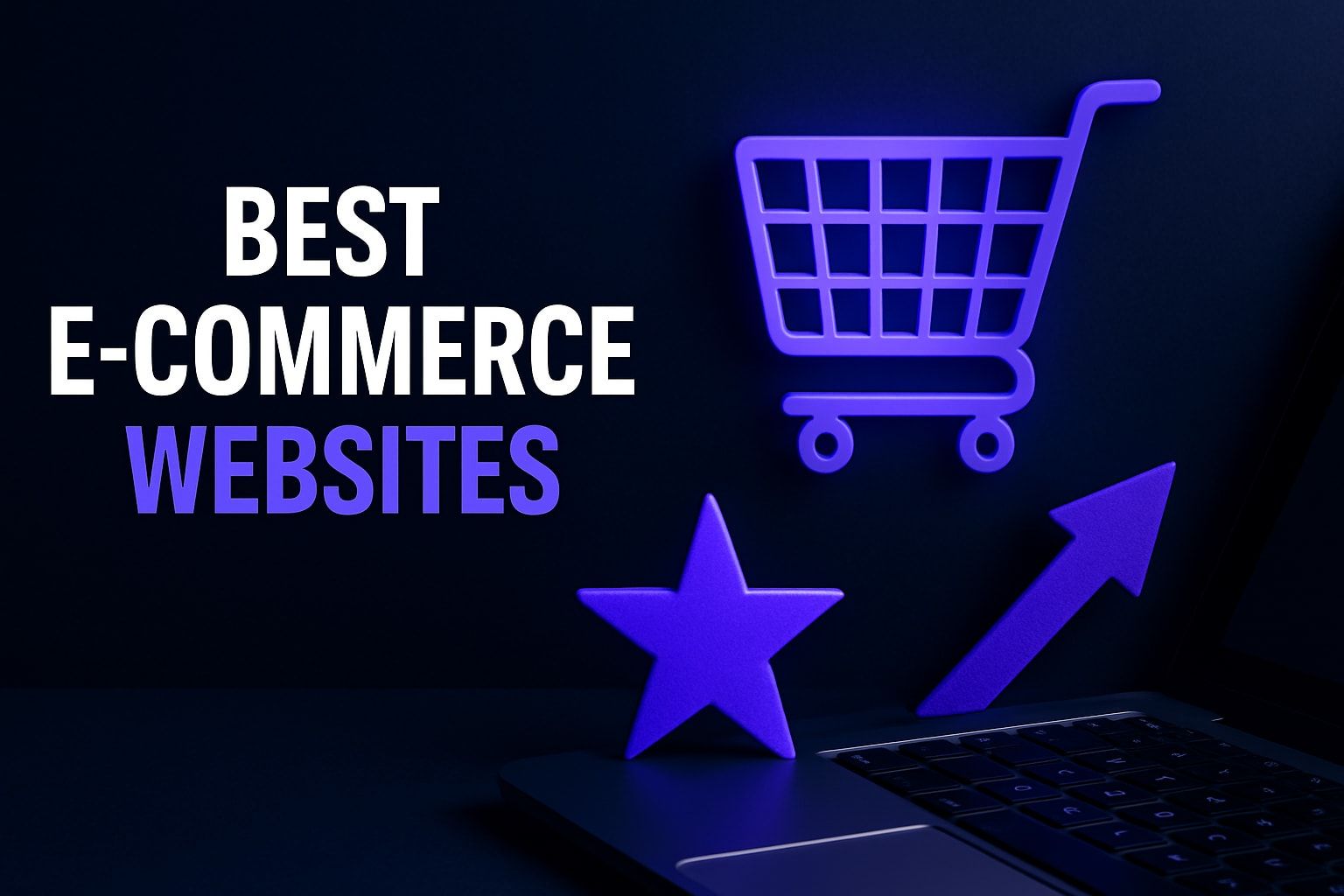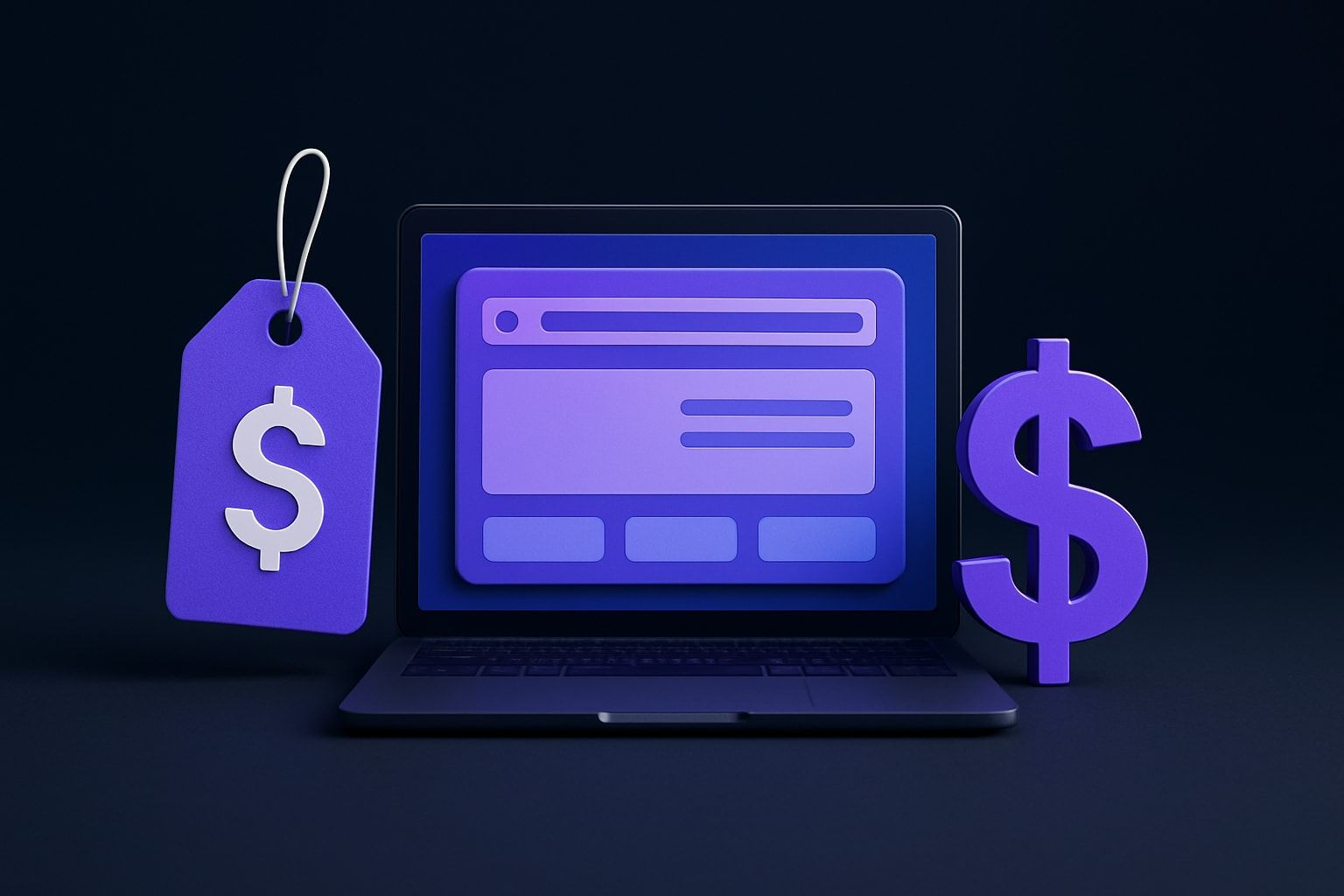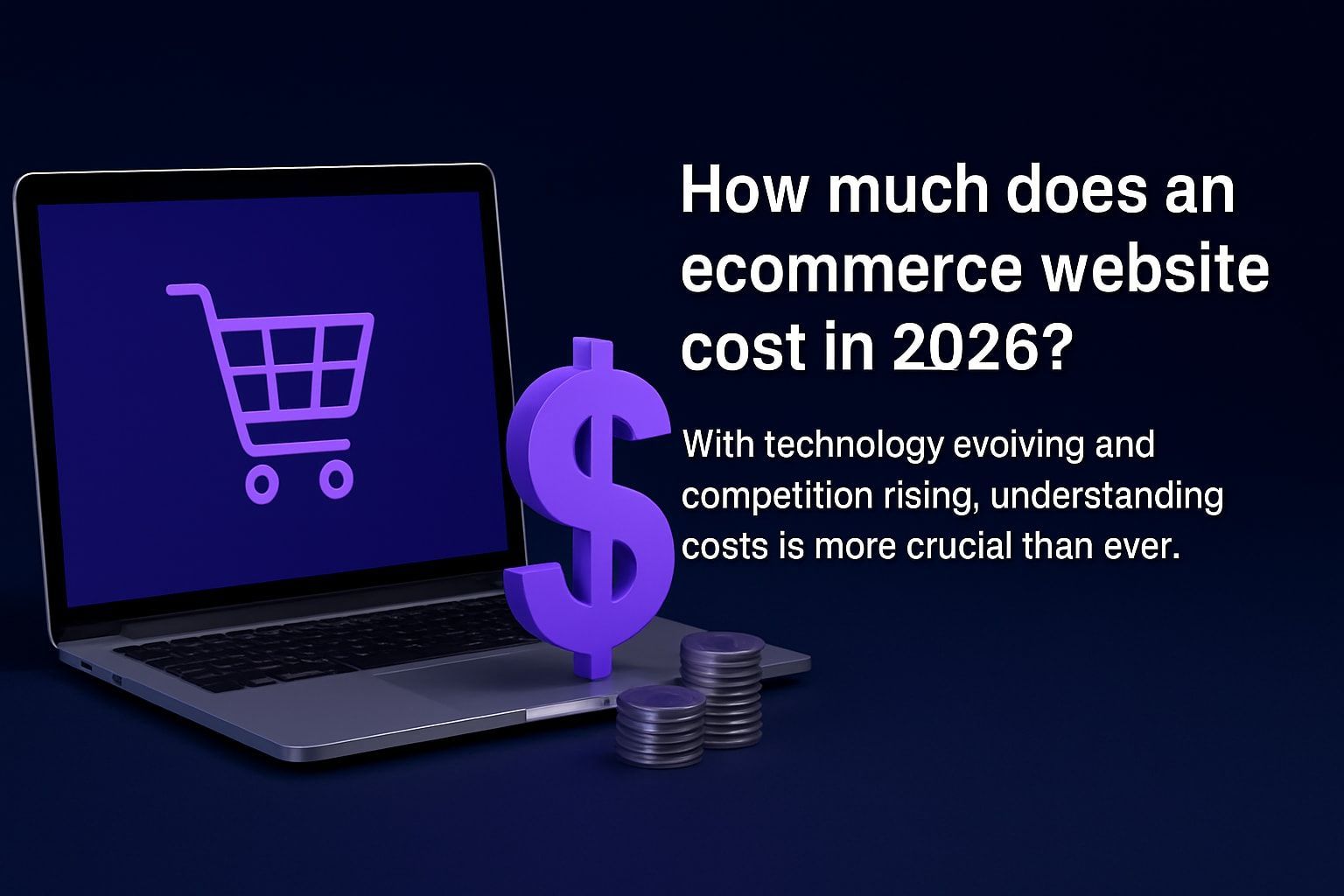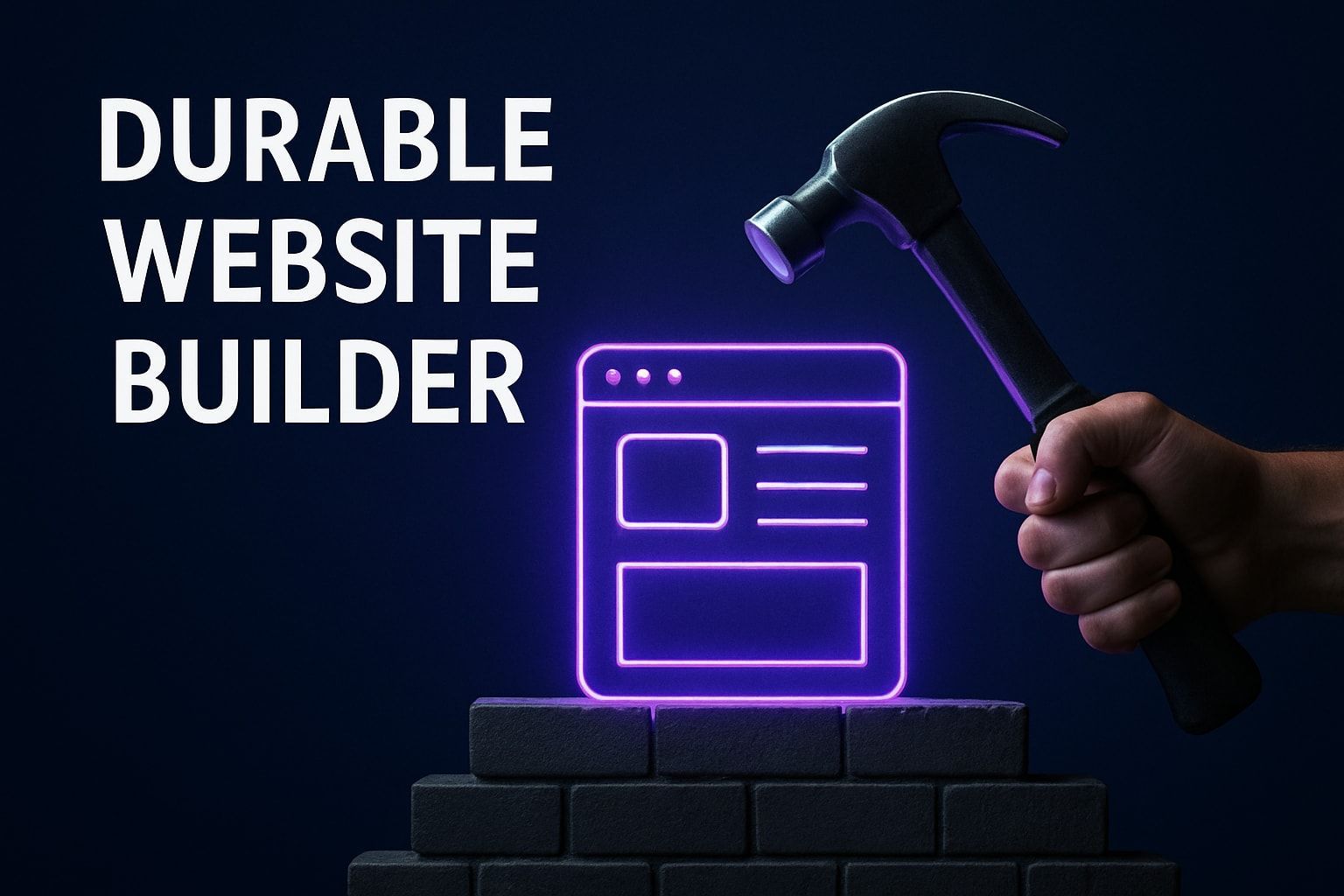The Ultimate Guide to AI Page Design for Beginners 2025
Imagine building a stunning website without writing a single line of code. Thanks to ai page design, creating professional web pages is now within everyone's reach—even if you're a total beginner.
This guide unlocks the secrets of ai page design, offering simple steps, best practices, and must-have tools for 2025. You'll discover what makes this technology so powerful, why it's transforming web creation, and how you can use it to launch your own site in no time.
Ready to see how easy web design can be? Let's dive in and explore how ai page design empowers anyone to turn their ideas into reality.
Understanding AI Page Design: Fundamentals & Benefits
The world of ai page design is changing how we think about building websites. With smart tools and automation, even beginners can create professional pages in record time. Let’s break down the basics and see why this technology is a game-changer for 2025.
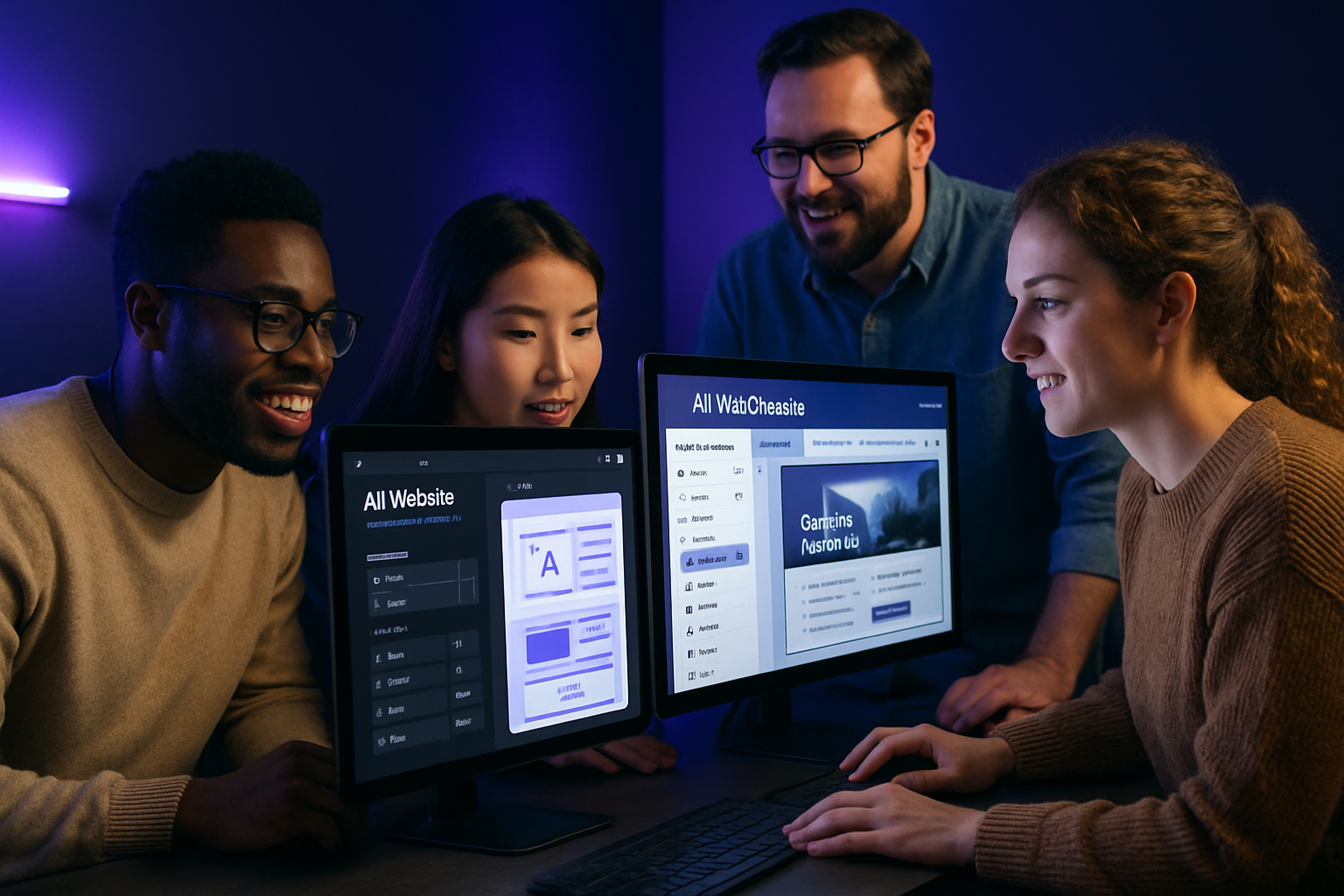
What is AI Page Design?
AI page design uses artificial intelligence to simplify and speed up the website creation process. Instead of building pages line by line with code, users interact with intuitive platforms that suggest layouts, generate content, and even optimize for mobile—all with the help of AI.
Let’s compare traditional and AI-driven workflows:
| Workflow | Traditional Web Design | AI Page Design |
|---|---|---|
| Skill Requirement | Coding & design expertise | Minimal technical knowledge |
| Speed | Weeks to launch | Hours or less |
| Personalization | Manual adjustments | Automated, user-driven |
| Content Creation | Entirely manual | AI-generated & editable |
AI page design is powered by technologies like machine learning, natural language processing (NLP), and generative AI. These systems analyze data, understand user intent, and create tailored layouts and copy. The result? Each user gets a site that feels custom-built for their needs.
Platforms use AI to recommend color schemes, arrange sections, and even write initial headlines or product descriptions. This level of personalization sets ai page design apart from cookie-cutter templates, giving everyone a chance to stand out online.
Why AI Page Design Matters in 2025
The rise of ai page design is more than just a tech trend—it’s reshaping the entire web landscape. In 2025, Gartner predicts that 70% of new websites will use AI-driven tools, a shift fueled by the demand for faster, smarter, and more accessible web creation.
AI page design is breaking down barriers for non-technical users. Anyone, from small business owners to artists, can now launch a polished website without hiring a developer. This democratization means more voices and ideas have a chance to shine online.
Businesses benefit, too. Faster site launches translate to lower costs and quicker pivots. AI-powered designs are often optimized for conversions, helping companies turn visitors into customers. Accessibility is also on the rise, as AI tools automatically check for and address common usability issues.
Curious about the numbers? According to AI in Web Design Industry Statistics, teams using ai page design tools report significant productivity gains and higher user engagement. That’s a compelling reason to make the switch.
Key Benefits for Beginners
For those just starting, ai page design removes the fear factor from web development. There’s no steep learning curve—just smart automation that guides your decisions, suggests layouts, and even fills in text or images.
Here’s what beginners love most:
- Time-saving automation: AI handles layout, color, and even content ideas, so you can focus on your message.
- Built-in SEO and mobile optimization: No need to worry about technical details; AI ensures your site looks great everywhere.
- Accessible to all: Whether you’re launching a blog, store, or portfolio, ai page design levels the playing field.
Consider the real-world impact: Small businesses that once took weeks to go live are now launching in hours. Artists and freelancers are building their brands without technical help. With ai page design, anyone can turn their vision into a stunning, functional website—no coding required.
Essential AI Page Design Tools & Platforms for Beginners
Choosing the right tools is the first big step in mastering ai page design. With so many platforms now offering AI-powered features, beginners can create stunning sites in less time and with less hassle than ever. The right platform can make all the difference—let’s see what’s out there.
Overview of Popular AI Page Builders
The ai page design landscape is rapidly evolving, with several standout platforms leading the charge for 2025. Each offers a unique blend of automation, customization, and user-friendly features, making web creation accessible for all skill levels.
Here’s a quick comparison of top AI page builders:
| Platform | Key Features | Pricing | Best For |
|---|---|---|---|
| Wix ADI | Drag-and-drop, AI design, eCommerce | Free/$14+ | General, eCommerce |
| Bookmark AIDA | AI-driven setup, templates, integrations | Free/$11+ | Small business |
| Framer AI | Generative layouts, real-time editing | Free/$20+ | Designers, portfolios |
| Avantiy | AI content, dynamic pages, SEO | Free/$12+ | Beginners, business |
Platforms like Framer AI and Wix ADI offer extensive template libraries, while Bookmark AIDA excels at rapid site generation. For a deeper dive into features, check out this Top AI Web Design Tools in 2025 review for beginner-friendly options.
Most tools include AI-generated content, mobile optimization, and easy integration with analytics or eCommerce solutions. Pricing models often start with a free tier and scale up as you need more advanced features.
How to Choose the Right AI Tool
Selecting the best platform for ai page design starts with understanding your goals. Are you launching a personal blog, an eCommerce storefront, or a professional portfolio? Each use case may require different features.
Consider these factors when evaluating your options:
- Ease of Use: Look for intuitive interfaces and step-by-step guidance.
- Scalability: Can the platform grow with your needs?
- Support: Responsive customer support and helpful tutorials are vital for beginners.
- User Reviews: Check ratings to see what other newcomers say about their experience.
- Security: Choose tools that offer regular updates and transparent privacy policies.
Many beginners value platforms that blend drag-and-drop editing with AI-driven suggestions, making design choices less overwhelming. Remember, the best ai page design tool is the one that fits your comfort level and project ambitions.
Avantiy: AI-Powered Website Builder for Beginners
Avantiy stands out as a top choice for those starting with ai page design. Its AI-driven site creation process lets you build a professional website in just a few clicks, even if you’re new to web design.
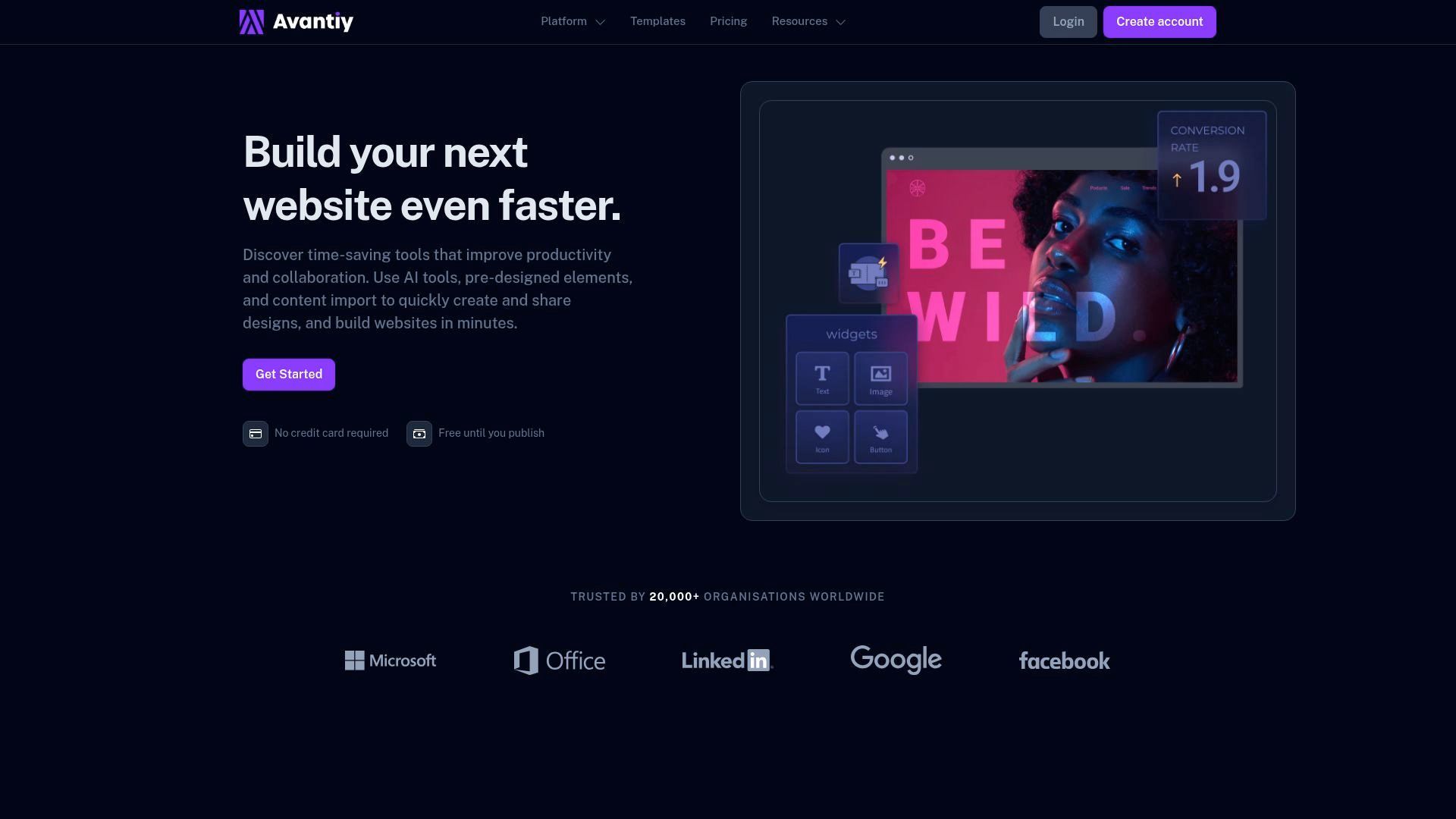
Key features include a drag-and-drop editor, a wide selection of customizable templates, and a built-in SEO engine. Avantiy’s AI content assistant can generate headlines, body text, and calls-to-action tailored to your goals. Dynamic page generation and extensive integrations mean you can launch anything from a small business site to a blog or eCommerce store.
Beginners appreciate Avantiy for its intuitive setup and real-time AI suggestions. Whether you’re building a portfolio or a business landing page, Avantiy removes complexity from ai page design and helps you go live faster.
Step-by-Step Guide: Creating Your First AI-Designed Page
Embarking on your first ai page design project can feel both exciting and overwhelming. Whether you’re creating a business website, a personal portfolio, or an online store, this guide will walk you through each essential step. With the help of AI tools, you’ll discover how accessible and efficient modern web creation can be—even for total beginners.
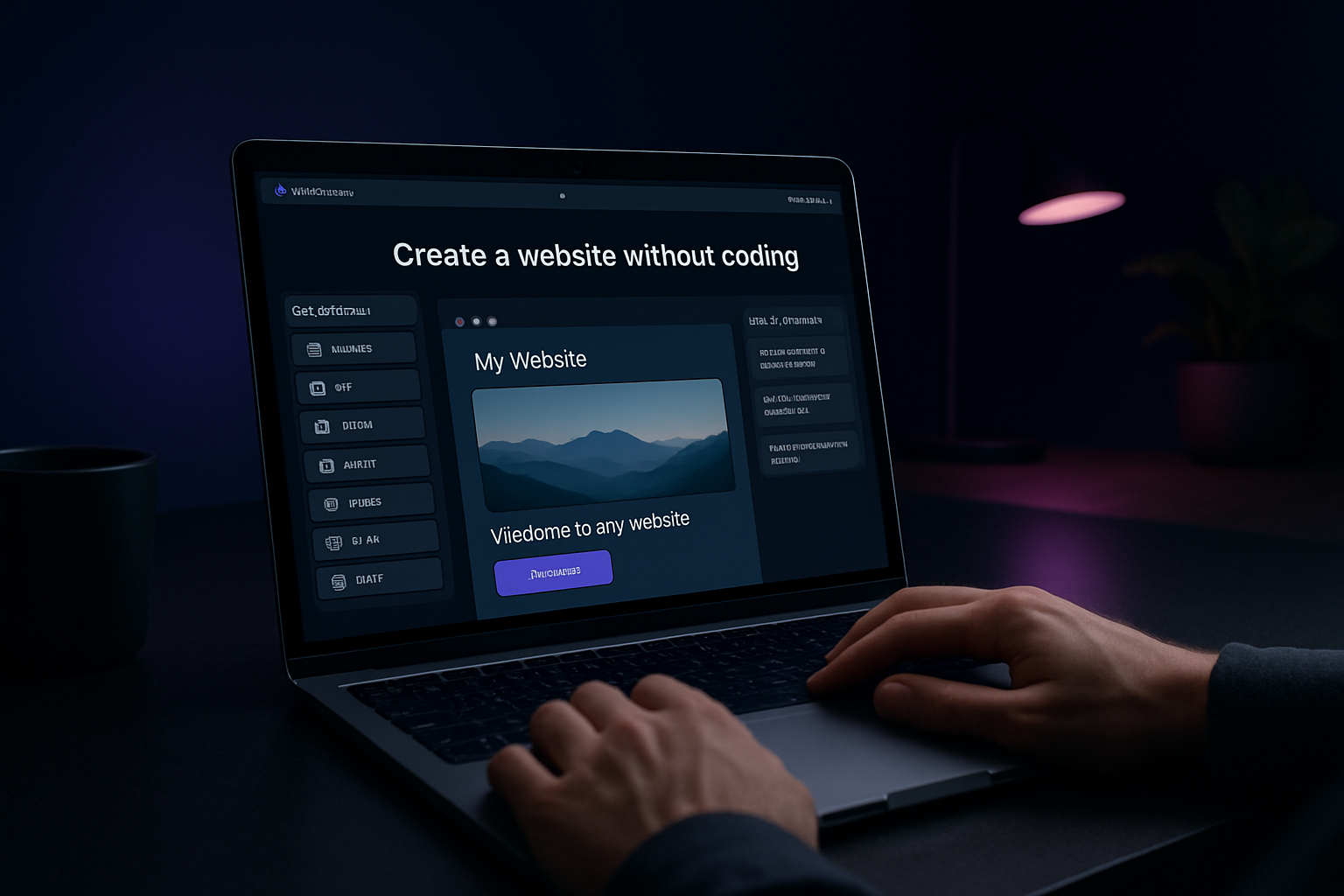
Step 1: Define Your Website’s Purpose & Audience
Before you dive into the technical side of ai page design, clarifying your website’s purpose is crucial. Ask yourself: What do I want this site to achieve? Who am I building it for?
For an eCommerce store, your goal might be to drive sales and showcase products. A personal portfolio, on the other hand, highlights your skills and achievements. For a business landing page, focus on capturing leads or providing company information.
Create a simple table to organize your thoughts:
| Website Type | Main Goal | Target Audience |
|---|---|---|
| eCommerce Store | Boost sales | Shoppers |
| Portfolio | Showcase talent | Employers/Clients |
| Business Landing | Generate leads | Prospects |
Identifying your audience’s needs helps shape your content, layout, and design choices. This foundation ensures your ai page design speaks directly to your users, making your site more effective from the start.
Step 2: Select and Set Up Your AI Page Builder
With your goals in mind, it’s time to choose the right ai page design platform. Look for tools that offer intuitive onboarding, drag-and-drop editing, and robust AI assistance. Most platforms start by asking you a few questions about your industry and style preferences, then suggest layouts or templates tailored to your needs.
You can browse a variety of website templates for AI design to find a starting point that fits your vision. Templates jump-start the creative process, letting you focus on customization instead of building from scratch.
Setting up usually involves:
- Creating a free or paid account
- Selecting a template or blank canvas
- Naming your site and setting up basic info
Once inside the builder, explore the AI-powered suggestions for structure and layout. These features simplify the initial setup, making ai page design approachable for everyone.
Step 3: Generate and Customize Content with AI
Now comes the creative heart of ai page design—content generation. Most AI builders can draft headlines, body text, and calls-to-action based on your site’s purpose and audience profile. Use the built-in content assistant to quickly generate starter copy for your homepage, about section, or product descriptions.
Here’s how to get the most from AI content tools:
- Provide clear prompts about your brand and goals
- Review and personalize the generated text for authenticity
- Use AI image and video suggestions to enhance visual appeal
Keep your voice and messaging consistent across the site. Even the best ai page design tools benefit from a human touch, so always tweak and refine AI-generated content to match your style.
Step 4: Optimize for SEO and Mobile Responsiveness
A successful ai page design doesn’t stop at good looks—it must perform well in search and on mobile devices. Most AI platforms come with built-in SEO features, helping you generate meta tags, sitemaps, and structured data automatically.
Leverage mobile previews to ensure your site looks great on any device. AI can suggest layout tweaks for better responsiveness, so test your pages on different screen sizes.
Remember, AI-optimized websites often achieve higher search rankings and better user engagement. Take advantage of automated SEO checks and mobile optimization tools to maximize your ai page design’s reach.
Step 5: Preview, Test, and Launch Your Page
Before you go live, always preview your ai page design in full. Use the platform’s preview mode to catch any formatting issues or content gaps. Ask friends or colleagues to test the site and provide honest feedback.
Create a checklist for your final review:
- Verify links and buttons work
- Check spelling and grammar
- Test on multiple devices and browsers
Once satisfied, hit publish. Most AI builders offer analytics dashboards so you can monitor traffic and user behavior. Use these insights to refine your site over time, making your ai page design even more effective.
Overcoming Common Challenges in AI Page Design
Launching your first project with ai page design tools is exciting, but it’s not always smooth sailing. Beginners often stumble over common hurdles, from quirky AI suggestions to privacy worries. Don’t worry—every challenge has a solution, and knowing what to expect is half the battle.
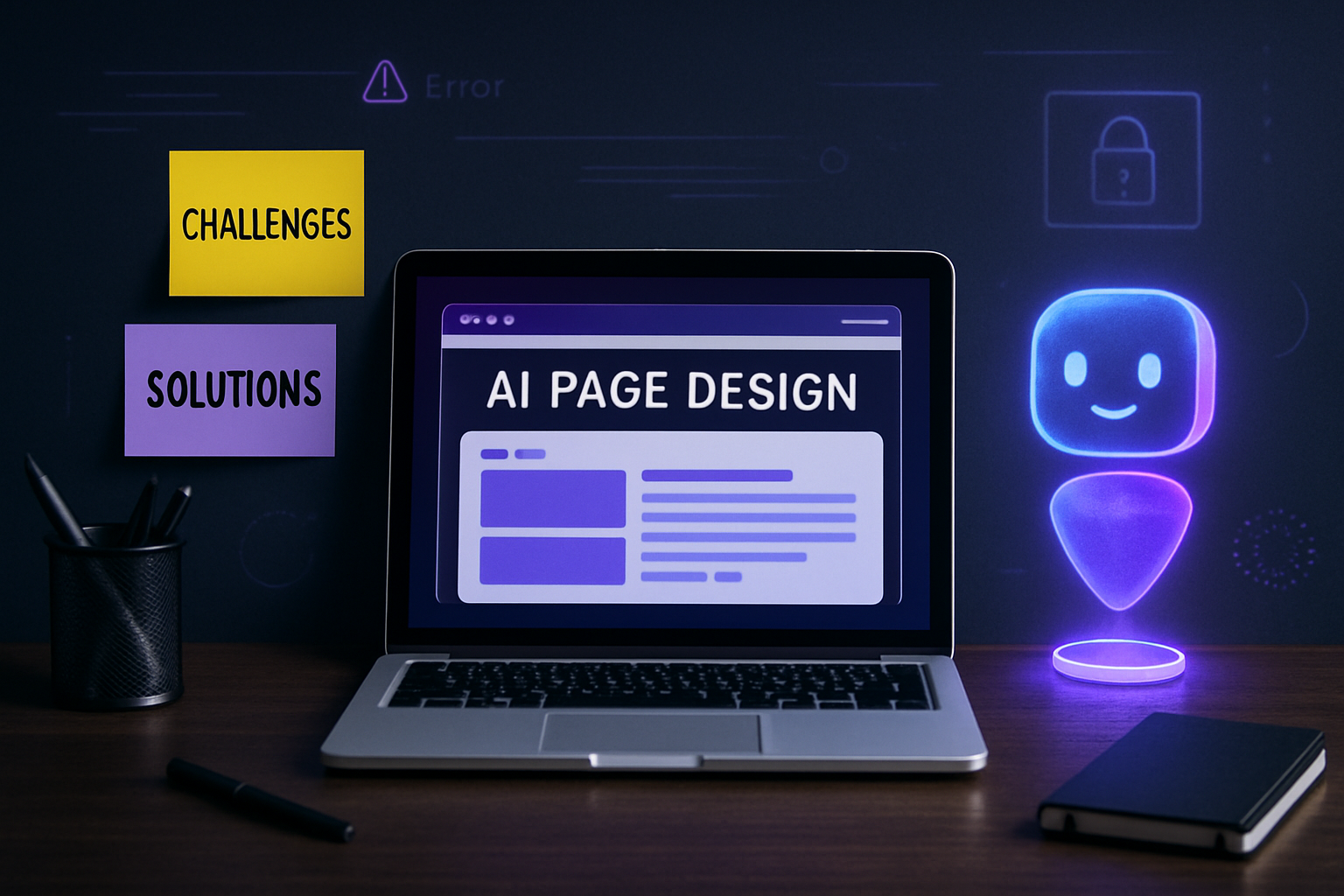
Dealing with AI Limitations and Errors
Even the best ai page design platforms can produce generic or off-target content. Sometimes, AI-generated text lacks your brand’s unique voice or misses the mark on details. It’s crucial to review everything the AI creates.
Tip: Always proofread headlines, body copy, and calls-to-action. If the AI’s suggestions feel bland, tweak them to match your vision. Many tools, like AI assistant for web design, offer editing features and workflow support so you can refine results easily.
Don’t hesitate to override AI recommendations. Your knowledge of your audience is just as valuable as the technology.
Remember, ai page design should empower creativity, not replace it. Striking the right balance between automation and authenticity makes your site stand out.
Managing Templates and Customization Constraints
Many ai page design platforms offer a range of templates, but sometimes these can feel restrictive. You might find it challenging to express your brand’s personality if you’re boxed in by preset layouts.
Start by exploring advanced customization options. Most builders allow you to adjust colors, fonts, and sections without code. For unique branding, mix and match template elements or add custom images and icons.
If you want even more flexibility, look for platforms with modular design blocks or the ability to add custom CSS. This way, you can break free from template limitations while still enjoying the efficiency of ai page design. Creativity flourishes when you use templates as a starting point, not a boundary.
Data Privacy and Security Considerations
Trust is essential when using ai page design tools, especially if you’re handling sensitive information. AI-powered platforms process data to generate content, so it’s important to understand how your information is used.
Here’s how to stay safe:
| Tip | Why It Matters |
|---|---|
| Read privacy policies | Know how your data is handled |
| Check for GDPR/CCPA compliance | Meet legal requirements |
| Use secure connections | Protect your content |
Choose ai page design platforms with transparent privacy practices and strong security measures. Don’t be afraid to ask about data storage, encryption, and user control. Your peace of mind is worth the extra effort.
Avoiding Over-Reliance on AI
While ai page design can speed up workflow and spark ideas, it’s easy to lean too heavily on automation. Relying solely on AI may lead to sites that look and sound like everyone else’s.
Use AI for inspiration and efficiency, but always add your own touch. Override suggestions that don’t fit your goals, and take time to learn the basics of design principles. This not only boosts your skills but also ensures your site reflects your true vision.
Remember, ai page design is a powerful partner—not a replacement for your creativity. The most successful sites blend the best of both worlds.
Future Trends in AI Page Design for 2025 and Beyond
The future of ai page design is filled with innovation and opportunity. As technology evolves, the way we create, customize, and manage websites is set to change dramatically. Let’s explore what’s on the horizon and how these trends will shape your web projects in 2025 and beyond.
Advances in Generative Design and Personalization
Generative AI is rapidly transforming the landscape of ai page design. In 2025, expect to see real-time design adaptation based on user behavior, allowing websites to automatically adjust layouts, imagery, and messaging for each visitor.
Hyper-personalized landing pages will become the norm. AI will analyze data points like browsing history, location, and interaction patterns to serve up unique page experiences. Interactive features, including voice integration and AR/VR elements, will be woven into page design for deeper engagement.
These advances mean websites won’t just be built faster—they’ll be smarter and more responsive to individual users. For anyone exploring ai page design, this level of personalization will set new standards for user experience.
Collaboration and Workflow Automation
Collaboration is at the heart of the next wave of ai page design. Multi-user editing, where teams can work together in real-time, is becoming standard. AI-powered project management tools will automate repetitive tasks, from layout suggestions to content updates, freeing up more time for creativity.
Workflow automation will extend to A/B testing and continuous optimization. AI will monitor user interactions, run experiments, and suggest changes to improve conversion rates—all without manual intervention. Seamless integration with tools like marketing platforms, CRM systems, and analytics dashboards will empower users to build comprehensive digital ecosystems.
As ai page design tools evolve, expect collaboration and automation to make site creation not only faster, but also more strategic and data-driven. For a deeper look at the platforms leading this movement, check out the Best AI Website Builders in 2025.
The Evolving Role of Designers and Non-Tech Users
With the rise of ai page design, the role of the designer is shifting from hands-on execution to strategic leadership. Designers will guide brand vision, oversee creative direction, and ensure that AI-driven outputs align with business goals.
Non-technical users will find themselves increasingly empowered. AI-powered tools lower the barriers, making it possible for anyone to build, launch, and tweak professional websites. Human oversight remains essential, ensuring that the final product reflects unique voice and brand identity.
Ultimately, ai page design is democratizing web creation. Designers and non-tech users alike can focus on innovation and storytelling, while AI handles the heavy lifting behind the scenes.
Statistics and Predictions
The growth trajectory for ai page design is impressive. According to recent studies, the AI web design market is projected to reach $5 billion by 2027. Startups, SMBs, and individual creators are adopting AI-powered platforms at unprecedented rates.
A table summarizing key statistics:
| Metric | 2025 Projection |
|---|---|
| Market Size | $5B (Statista, 2024) |
| New Sites Using AI Tools | 70% (Gartner, 2024) |
| Search Ranking Boost (AI-optimized) | Up to 30% |
For more insights into how AI is shaping web design—covering responsive layouts, load speeds, and user engagement—explore the AI in Design Statistics for 2025.
With these trends, the impact of ai page design will only accelerate, offering exciting opportunities for creators at every level.
Expert Tips & Best Practices for AI Page Design Success
Creating a standout website with ai page design is easier than ever, but true success comes from blending smart tools with a thoughtful approach. Whether you’re building your first site or refining your skills, these expert tips will help you make the most of every feature and avoid common pitfalls.
Maximizing the Value of AI Tools
To get the most out of ai page design, pair automation with your own creative vision. Let AI handle the heavy lifting—such as layout suggestions, color schemes, and content drafts—while you refine details to reflect your brand’s personality.
- Use AI-generated templates as a starting point, not a finished product.
- Regularly update your site to keep up with trends and business changes.
- Leverage analytics to see what’s working and adjust accordingly.
Many platforms also offer built-in SEO optimization features that streamline your search rankings, making it easier to reach your audience. Take time to review these automated suggestions and personalize them for the best results with your ai page design.
Building Accessible and Inclusive Sites with AI
Accessibility is a crucial part of ai page design. Modern AI tools can help ensure your site meets ADA and WCAG standards by scanning for color contrast, font size, and navigational clarity.
- Enable automated accessibility checks within your builder.
- Add alt text to images and provide keyboard navigation options.
- Test your site with screen readers and mobile devices.
Inclusive design benefits everyone, making your website easier to use for people of all abilities. AI-driven recommendations often highlight overlooked issues, so trust these insights to build a more welcoming space.
Staying Ahead: Continuous Learning and Community Engagement
The world of ai page design evolves quickly. Stay informed by following AI design blogs, subscribing to newsletters, and joining online forums where users share their experiences.
- Participate in community discussions to exchange tips and troubleshoot challenges.
- Explore official documentation and tutorials for your chosen platform.
- Attend virtual events or webinars to stay up-to-date on new features.
Continuous learning helps you unlock advanced capabilities and keeps your projects fresh. Engaging with the broader ai page design community can spark inspiration and provide support as you grow.
Measuring Success and Iterating
Success in ai page design isn’t just about launching your site—it’s about ongoing improvement. Set clear KPIs like page load speed, bounce rate, and conversion goals to measure progress.
- Use built-in analytics tools to monitor visitor behavior.
- Gather user feedback through surveys or direct outreach.
- Regularly review your site’s performance and iterate based on data.
Celebrate milestones, no matter how small. Each update is a step toward a better, more effective website. Remember, the most successful ai page design projects are those that evolve with their audience and industry trends.
Now that you’ve seen how AI can simplify and supercharge every step of your website design journey, why not put these insights into action? Whether you’re dreaming up your first portfolio, launching a new business, or just exploring creative ideas, platforms like Avantiy make it easy to get started—no coding or design background needed. With intuitive drag-and-drop tools, smart templates, and built-in SEO, you’ll have everything you need to build a stunning, high-performing site in no time. Ready to turn your ideas into reality?
Start Building Your Website Today
Start building your new website today
No credit of debit card required start building today

